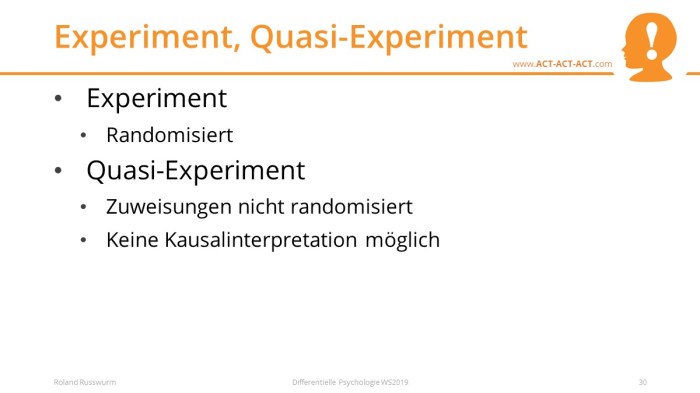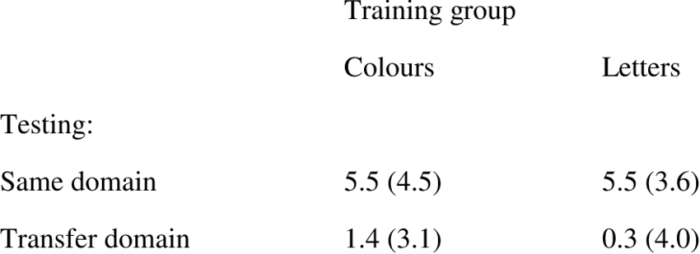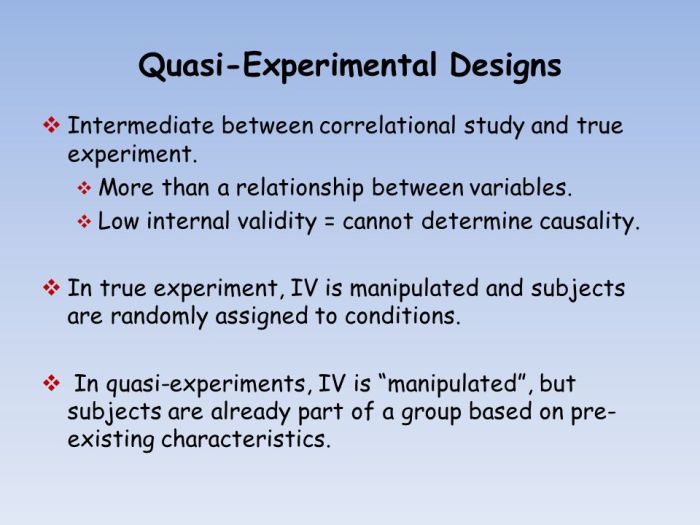Correlation experiment or quasi experiment worksheet answers provide a foundation for understanding the intricacies of research design and analysis. This guide delves into the differences between correlation and quasi experiments, offering examples and highlighting their respective strengths and weaknesses. It explores the steps involved in designing and conducting these experiments, emphasizing the selection of appropriate variables and the control of confounding factors.
The guide further discusses the methods of data collection and the importance of ethical considerations. It provides insights into analyzing the results, including the use of statistical tests and the interpretation of findings. Finally, it Artikels the principles of reporting the results clearly and concisely, showcasing examples of well-written reports.
Correlation Experiment or Quasi Experiment Worksheet Answers: An Overview

Correlation and quasi experiments are two types of research designs that are used to investigate the relationship between variables. Correlation experiments are used to determine whether there is a relationship between two or more variables, while quasi experiments are used to determine whether there is a causal relationship between two or more variables.
The main difference between correlation and quasi experiments is that correlation experiments do not involve any manipulation of the independent variable, while quasi experiments do. In a correlation experiment, the researcher simply observes the relationship between the variables, while in a quasi experiment, the researcher manipulates the independent variable and observes the effect on the dependent variable.
Correlation experiments are often used to explore relationships between variables that cannot be manipulated, such as the relationship between age and intelligence. Quasi experiments are often used to investigate relationships between variables that can be manipulated, such as the relationship between smoking and lung cancer.
Both correlation and quasi experiments have strengths and weaknesses. Correlation experiments are relatively easy to conduct and can provide valuable information about the relationship between variables. However, correlation experiments cannot be used to determine whether there is a causal relationship between two or more variables.
Quasi experiments can be used to determine whether there is a causal relationship between two or more variables, but they are more difficult to conduct than correlation experiments and can be more difficult to control for confounding variables.
Designing a Correlation or Quasi Experiment: Correlation Experiment Or Quasi Experiment Worksheet Answers

The first step in designing a correlation or quasi experiment is to identify the variables that you want to study. Once you have identified the variables, you need to decide which type of research design you will use. If you are interested in exploring the relationship between two or more variables, you will use a correlation experiment.
If you are interested in investigating the causal relationship between two or more variables, you will use a quasi experiment.
Once you have decided which type of research design you will use, you need to develop a research plan. The research plan should include the following information:
- A statement of the research question
- A description of the variables that you will be studying
- A description of the research design that you will be using
- A description of the data collection methods that you will be using
- A description of the data analysis methods that you will be using
Once you have developed a research plan, you need to obtain approval from an institutional review board (IRB). The IRB will review your research plan to ensure that it is ethical and that it will not harm the participants in your study.
Conducting a Correlation or Quasi Experiment
Once you have obtained approval from the IRB, you can begin conducting your study. The first step is to recruit participants for your study. The participants should be representative of the population that you are interested in studying.
Once you have recruited participants, you need to collect data from them. The data collection methods that you use will depend on the type of research design that you are using. If you are conducting a correlation experiment, you will need to collect data on the variables that you are interested in studying.
If you are conducting a quasi experiment, you will need to collect data on the independent variable and the dependent variable.
Once you have collected data from the participants, you need to analyze the data. The data analysis methods that you use will depend on the type of research design that you are using. If you are conducting a correlation experiment, you will need to use statistical methods to determine whether there is a relationship between the variables that you are interested in studying.
If you are conducting a quasi experiment, you will need to use statistical methods to determine whether there is a causal relationship between the independent variable and the dependent variable.
Analyzing the Results of a Correlation or Quasi Experiment

Once you have analyzed the data, you need to interpret the results. The interpretation of the results will depend on the type of research design that you are using. If you are conducting a correlation experiment, you will need to interpret the results to determine whether there is a relationship between the variables that you are interested in studying.
If you are conducting a quasi experiment, you will need to interpret the results to determine whether there is a causal relationship between the independent variable and the dependent variable.
When interpreting the results of a correlation or quasi experiment, it is important to consider the following factors:
- The strength of the relationship between the variables
- The statistical significance of the relationship between the variables
- The potential for confounding variables
Reporting the Results of a Correlation or Quasi Experiment

Once you have interpreted the results of your study, you need to report the results in a written report. The written report should include the following information:
- A statement of the research question
- A description of the variables that you studied
- A description of the research design that you used
- A description of the data collection methods that you used
- A description of the data analysis methods that you used
- A description of the results of your study
- A discussion of the implications of your study
The written report should be clear and concise. It should be written in a style that is accessible to a wide audience.
Quick FAQs
What is the key difference between correlation and quasi experiments?
Correlation experiments establish a relationship between variables without manipulating them, while quasi experiments involve manipulating one variable while controlling for others.
How do I select appropriate variables for a correlation or quasi experiment?
Variables should be relevant to the research question, measurable, and have sufficient variation.
Why is it important to control for confounding variables?
Confounding variables can influence the relationship between the independent and dependent variables, leading to biased results.
What are some common methods of data collection for correlation or quasi experiments?
Surveys, observations, and experiments are commonly used methods for data collection.